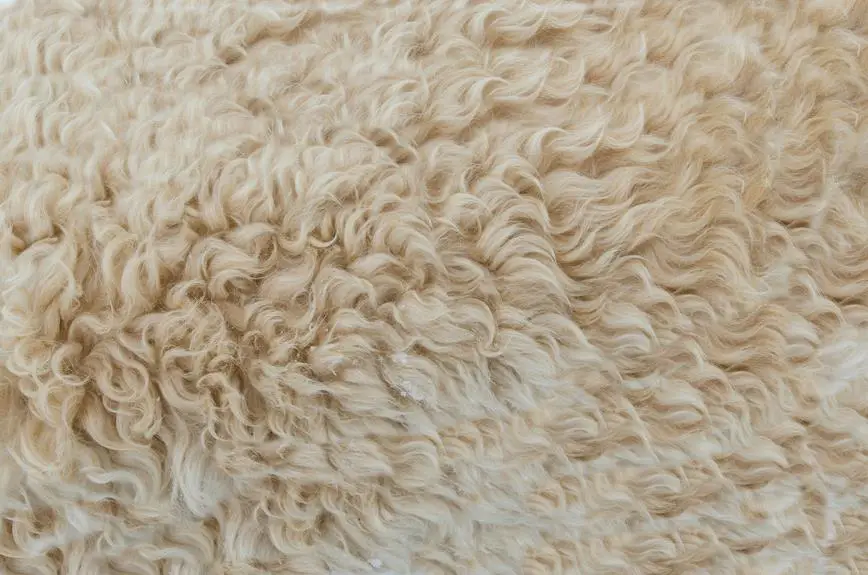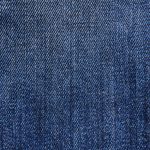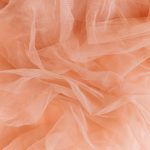When you're choosing between muslin and gauze, it's essential to recognize how each fabric can impact your project. Muslin's sturdiness and higher thread count make it suitable for structured designs, while gauze's sheer, breathable nature lends itself to lighter applications. However, the differences don't just stop there; each fabric has unique benefits and ideal uses that can significantly influence your choices. So, what factors should you consider when deciding which fabric is right for you?
Table of Contents
Key Takeaways
- Muslin is a durable, tightly woven cotton fabric, while gauze is a lightweight, sheer fabric often blended with other fibers.
- Muslin offers warmth and structure, making it suitable for tailored designs, while gauze provides breathability, ideal for summer clothing.
- Both fabrics are versatile; muslin is used for mock-ups and quilting, while gauze excels in medical applications and light, flowy garments.
- Muslin has a higher thread count, enhancing sturdiness, whereas gauze's loose weave allows for maximum airflow and comfort in hot weather.
Overview of Muslin
Muslin is a versatile cotton fabric known for its lightweight and breathable qualities, making it a popular choice for various applications. You'll often find it used in quilting, sewing, and even in the culinary world. Its loose weave allows air to circulate, which is why many chefs prefer muslin for straining liquids or wrapping delicate foods.
When you're working with muslin, you'll appreciate its soft texture and ease of dyeing, allowing for endless creative possibilities. Whether you're making garments, curtains, or craft projects, muslin's adaptability shines through. It's also commonly used as a base fabric for patterns, giving you a reliable foundation to test your designs.
One of muslin's standout features is its cost-effectiveness. It's relatively inexpensive, making it a go-to fabric for beginners and professionals alike. You can buy it in large quantities without breaking the bank, which is great for larger projects.
Additionally, muslin comes in various weights, from light to heavy, so you can choose the right type for your specific needs. Overall, muslin's functionality and affordability make it an essential fabric in many creative and practical applications.
Overview of Gauze
Gauze is a lightweight, sheer fabric that's often made from cotton or linen, and it's prized for its breathability and versatility in various applications. You'll find gauze used in everything from medical settings to fashion, thanks to its unique qualities. This fabric's open weave allows air to circulate, making it comfortable to wear or use in warm conditions.
Here are four key uses of gauze:
- Medical Dressings: Gauze is commonly employed in hospitals for wound care, as it allows for proper ventilation while absorbing moisture.
- Fashion: Designers often utilize gauze in clothing, creating flowy garments that are perfect for summer wear.
- Crafting: You can use gauze for various DIY projects, like creating soft decorations or unique gift wraps.
- Home Decor: Gauze can add an ethereal touch to your home with sheer curtains or table runners.
With its lightweight nature, gauze is a go-to choice when you need fabric that combines functionality and style.
Whether you're in the medical field or simply want to enhance your wardrobe, gauze is a fabric you should definitely consider.
Key Characteristics
When comparing muslin and gauze, you'll notice key differences in their fabric composition.
Each has its own unique weight and breathability factors that can greatly affect your projects.
Understanding these characteristics will help you choose the right material for your needs.
Fabric Composition Differences
Understanding the fabric composition reveals that muslin is typically made from tightly woven cotton, while gauze features a looser weave, often blending cotton with other fibers. This fundamental difference affects their uses and handling.
Here are some key characteristics that differentiate these two fabrics:
- Muslin: It's crafted from 100% cotton, giving it a smooth texture and durability, perfect for sewing projects, home decor, and culinary uses.
- Gauze: Often a blend, gauze can include cotton, polyester, or rayon, resulting in a lightweight and sheer quality, ideal for layering or creating delicate garments.
- Thread Count: Muslin generally has a higher thread count, which contributes to its sturdiness and makes it easier to work with for tailored projects.
- Feel: Muslin feels soft and substantial, while gauze has a more airy and flowing feel, making it suitable for breathable clothing or baby items.
Weight and Breathability Factors
The differences in fabric composition lead to distinct variations in weight and breathability between muslin and gauze.
Muslin is typically heavier than gauze, which makes it a solid choice for projects that require more structure, like curtains or light upholstery. Its weight can also provide a comforting drape, perfect for wraps or blankets.
On the other hand, gauze is lightweight and airy, making it ideal for items like baby swaddles or lightweight summer clothing.
When it comes to breathability, gauze takes the lead. Its loose weave allows for maximum airflow, which is why it's often used in hot weather. You'll appreciate how gauze helps keep you cool and comfortable.
Muslin, while still breathable, doesn't offer the same level of ventilation due to its denser weave. This can make it a better option for cooler weather or situations where you want a bit more warmth.
Ultimately, choosing between muslin and gauze depends on your specific needs. If you prioritize weight and structure, go for muslin. If breathability and lightness are your goals, gauze is the way to go.
Common Uses
When it comes to common uses, both muslin and gauze have their own unique applications.
You might find muslin in baby swaddles and blankets, providing softness and breathability.
On the other hand, gauze is often essential in medical and first aid situations.
Additionally, both materials lend themselves well to craft and DIY projects, making them versatile choices for various needs.
Baby Swaddles and Blankets
Baby swaddles and blankets made from muslin or gauze offer comfort and breathability, making them perfect for soothing your little one. These materials not only provide a soft touch but also help regulate temperature, ensuring your baby stays cozy without overheating.
Here are some common uses for these swaddles and blankets:
- Swaddling: You can wrap your baby snugly to mimic the womb's environment, which helps reduce the startle reflex and promotes better sleep.
- Burp Cloths: Their absorbent nature makes them ideal for catching spills and drools during feedings, keeping both you and your baby mess-free.
- Lightweight Blankets: Use them during warm weather to provide a layer of comfort without causing overheating, making them perfect for outdoor strolls or picnics.
- Play Mats: Spread a muslin or gauze blanket out for tummy time, offering a soft surface for your baby to explore while staying protected from hard floors.
With their versatility and softness, muslin and gauze swaddles and blankets are essential for any new parent.
Medical and First Aid
Muslin and gauze are invaluable in medical and first aid settings due to their lightweight, breathable nature and versatility for various applications. You'll find that both materials serve distinct purposes, making them essential in any first aid kit or medical environment.
Here's a quick comparison of their common uses:
| Feature | Muslin | Gauze |
|---|---|---|
| Wound Dressing | Provides cushioning and support | Ideal for covering wounds |
| Absorbency | Good for absorbing fluids | Highly absorbent |
| Breathability | Allows air circulation | Promotes healing |
| Sterilization | Can be sterilized for medical use | Often pre-sterilized |
| Applications | Used in splints or bandages | Common for gauze pads |
When you need to stabilize a fracture, muslin can be fashioned into a sturdy sling. On the other hand, gauze is perfect for dressing cuts or scrapes, allowing them to breathe while absorbing any discharge. Both materials are essential tools, giving you the versatility and reliability you need in medical emergencies.
Craft and DIY Projects
In craft and DIY projects, muslin and gauze offer unique benefits that enhance creativity and functionality. Both materials are versatile, allowing you to explore various artistic avenues. Here's how you can use them effectively:
- Sewing Projects: Muslin is perfect for making mock-ups of garments, helping you test your patterns before cutting into expensive fabric.
- Home Décor: Use gauze to create dreamy curtains or table runners. Its lightweight nature adds an ethereal quality to your space.
- Crafting Accessories: Both muslin and gauze can be used to make unique bags, pouches, or even gift wrapping. They provide a rustic charm to your creations.
- Textile Art: Layering muslin or gauze in mixed media artwork can create depth and texture. You can paint, dye, or print on them to enhance your artistic expression.
Whether you're a seasoned crafter or just starting, these materials can elevate your projects. Choose muslin for more structure and gauze for a softer look. With these options, your creativity knows no bounds!
Benefits of Each Fabric
When choosing between muslin and gauze, you'll find each fabric offers unique benefits that cater to different needs and preferences.
Muslin is versatile and durable, making it perfect for a wide range of projects. Its tightly woven structure provides a sturdy base for sewing patterns, draping, and making costumes. You can easily use muslin for testing designs, as it's more affordable than many other fabrics. Plus, it's available in various weights, so you can select the right one for your specific project.
On the other hand, gauze is lightweight and airy, ideal for projects that require breathability. This fabric is perfect for summer clothing, baby items, and lightweight curtains. Its loose weave allows for excellent airflow, which is especially beneficial in warm weather. Gauze also drapes beautifully, creating a soft, flowing effect that's perfect for layering.
Both fabrics can be dyed, making them customizable to suit your style. Depending on your project, you might prefer the sturdiness of muslin or the lightness of gauze. By understanding these benefits, you can make an informed choice that meets your needs.
Choosing the Right Fabric
Selecting the right fabric for your project depends on factors like intended use, desired drape, and personal style. Whether you're sewing clothing, home decor, or crafts, understanding the differences between muslin and gauze can guide your choice. Here are four key points to consider:
- Intended Use: Think about what you're making. For lightweight garments or layering, gauze is ideal. If you need something sturdier for test patterns or home projects, muslin is the way to go.
- Drape: Consider how the fabric will hang. Gauze has a soft, flowing drape, perfect for breezy summer outfits. Muslin, on the other hand, has more structure, making it suitable for tailored designs.
- Breathability: If you're in a warm climate or making items for babies, gauze's breathability is a major advantage. Muslin, while breathable, can be slightly heavier.
- Personal Style: Finally, think about your aesthetic. If you prefer a soft, romantic look, gauze may suit your style better. For a more classic, clean appearance, muslin might be your fabric of choice.
Choose wisely!
Frequently Asked Questions
Can Muslin and Gauze Be Used Interchangeably in Sewing Projects?
You can't always use muslin and gauze interchangeably in sewing projects. Their different textures and weights affect how your final product looks and behaves. Choosing the right fabric ensures better results in your creations.
How Do Muslin and Gauze Affect Dye Absorption?
When dyeing, muslin absorbs color more evenly due to its tighter weave, while gauze, being looser, may create a lighter, more textured effect. You'll notice distinct results based on the fabric choice you make.
Are There Different Types of Muslin and Gauze Available?
Yes, there are different types of muslin and gauze available. You'll find variations in weight, weave, and finish, each suited for specific projects. Explore these options to find what best fits your needs.
What Is the History Behind Muslin and Gauze Fabrics?
You'll find that muslin dates back to ancient times, originating in India, while gauze has roots in the Middle East. Both fabrics evolved through trade, becoming essential in various cultures for clothing and medical uses.
How Do I Care for Muslin and Gauze Materials?
To care for muslin and gauze, wash them in cold water with gentle detergent, avoiding bleach. You should air dry or tumble dry on low heat, and iron them on a low setting if needed.
- Kevlar Vs Cordura for Plate Carriers: Tactical Equipment Guide - June 21, 2025
- Kevlar Non-Woven Fabric: Non-Sewing Applications - June 21, 2025
- Kevlar Net Fabric: Fishing and Rescue Netting - June 21, 2025







